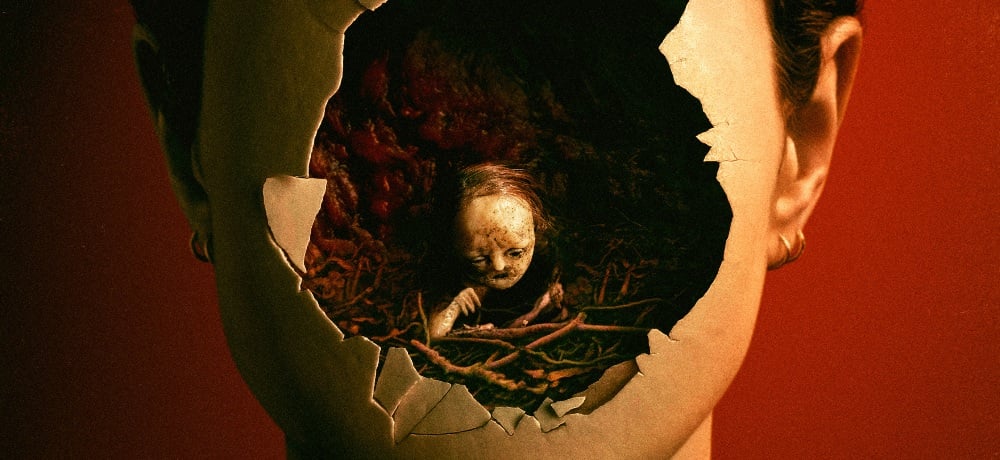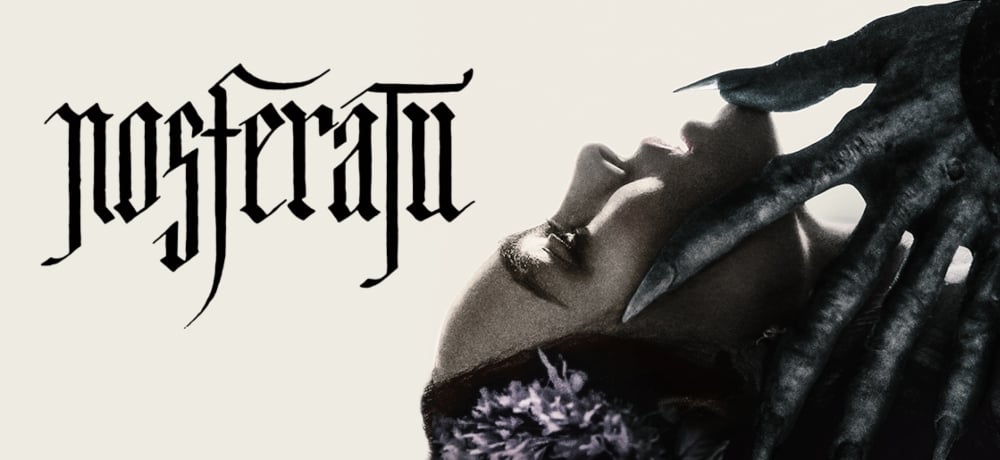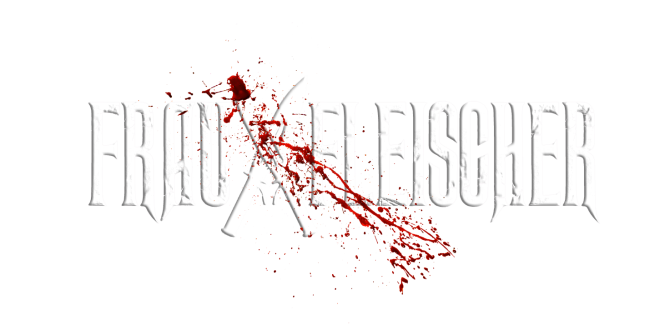Interview: Director/Co-Writer Robert Morgan Discusses the Palpable Horrors of STOPMOTION


Looking to finally find her own creative voice, the daughter of a legendary stop-motion animator discovers that her film is taking on a deadly life of its own in Stopmotion. Brimming with horrors both palpable and psychological, Stopmotion is now playing in theaters via IFC Films before heading to Shudder on May 31st, and Daily Dead had the pleasure of talking with director/co-writer Robert Morgan to discuss his ambitious blend of live-action and stop-motion, exploring the creative process, and collaborating with lead actor Aisling Franciosi.
Below, you can read our full interview with Robert Morgan, and to learn more about Stopmotion, visit:
Congratulations on Stopmotion, Robert. This movie really blew me away. It got under my skin quite literally while watching some of the skin-centric scenes in this film. So first and foremost, congratulations on the movie. It is quite a ride.
Robert Morgan: Well, thank you very much.
I’m curious, looking back at this journey for you, what was it about this story, co-writing it and then also taking it on as the director, where did this fascination with stop-motion animation begin for you, and what was it about it that made you want to kind of center an entire feature film around that subject?
Robert Morgan: Well, I have a background in stop-motion animation. I am a stop-motion animator and I have been for 20 years or something. So I’ve made a lot of short films of my own. And the idea just came about because I just thought, first of all, I’d never seen stop-motion animation depicted in a movie before as something that people do. And I thought the idea of doing a psychological horror film that follows around a stop-motion animator was just a great starting point for a horror film. Because stop-motion, you sit in a dark room alone, and you perform this strange ritual on these puppets and they come to life. To me, there’s always been a sort of an occult kind of quality to the process of stop-motion. So that was the starting point.
And then I merged that with another idea that I had, which was about an experience I had where I was working on a stop-motion short film, and I had the sensation that the film sort of took on a life of its own. And it was telling me what it wanted to be instead of me telling it what it wanted to be. I’m sure creative people can relate to that, whether you’re writing something or painting something, there’s a moment if you’re in the groove where the thing starts talking back to you and it takes on its own life. And it becomes a kind of conversation you’re having with it. So that was the sort of second idea. And so that would be the story of it, is about somebody who’s struggling with a creative object, in this case a film, that starts to develop its own wants.
Yeah, it certainly does in this movie. And I love, like you mentioned, the painstaking process of stop-motion where we see Aisling’s character, she’s moving the head just a millimeter and it’s such a labor of love, making these types of movies. So when you were coming into this, having that experience, was it difficult to merge live action with stop-motion? Was that an additional challenge for you to merge those two worlds as the line between reality blurs for the characters?
Robert Morgan: Yes, it was. But I think narratively, there was a sort of natural order to it, which is that we follow the character and as she gets deeper into the film and we see the film that she’s making, the film starts stepping out and into the real world. So there was a logical progression to it. Until the end, where she’s not even having to animate anymore, she touches them and they come to life. So it sort of became a more subjective kind of thing as it went on, and it’s part of the reason why I wanted to make the film about one character who you follow all the way through. She’s in every single scene. You never get anybody else’s perspective. You’re just with her. And out of that journey and her obsession, that’s where the things start to kind of blend together. It’s technically challenging to do some of that stuff, but I always understood where it was coming from. It’s coming from the character. So that aspect was quite easy to grasp.
You have a tremendous cast in this film. Aisling really carries the movie, and there’s just so much talent across the board through the supporting cast as well. Aisling is in every scene, so she has to carry so much of the emotional workload in this movie. Did you collaborate a lot with her on how to work with the stop-motion and give her your insights into that?
Robert Morgan: Yeah. I mean, knowing that it was going to be kind of a one-actor show, basically, I knew I had to have someone really, really good. And it wasn’t a huge budget, so we had to just really carefully choose who was going to play that character. And I had a very short list of people who I think could do it, and Aisling was one of them because I’d seen her previous work in The Nightingale, for example. She’s amazing in that film. But also I’d seen other things that she’d been in where she was very different in each film she’d been in, so I knew she was versatile, too. And I knew she could play all the different colors of Ella, go through lots of different stages. And it was important that you always go with her. So Aisling had all of those qualities. When I spoke to her as well, she absolutely 100% understood the film.
She completely understood it. She knew what it was about. She related to it, the creative struggle. Not as an animator, but as an artistic person, she understood the struggle and the obsession and how it can be bad for you. And then when she came on board I gave her some lessons in stop-motion. She was very good at it. She picked it up really easily, actually. As she was doing it, she was going, “I could see how you could get obsessed with this actually.” She had a natural kind of affinity for it, which was great because it had to look like she knew what she was doing on screen.
I love the dynamic between her and her mom and how she’s living in the shadow of her mother, who’s this legendary stop-motion animator. But the dynamics between those two and just the theme of that mother-daughter relationship I thought really came out well, and especially her trying to find her own voice. She says she has no voice of her own before it takes on a life of its own after her mother falls to the illness. I thought that was really interesting, the whole dynamic there.
Robert Morgan: Yeah, it’s partly a mechanism to show how suppressed Ella’s own creativity is. There’s nothing worse if you feel like you want to be creative when you’re in the proximity of someone who is very, very creative and very accomplished and very established at what they do. So it feeds into her sense of inadequacy. But it’s a weird codependent relation because at the same time her mother needs her, but needs her in the way that she’s controlling her and she’s being her hands for her. So it’s a bit of a weird puppeteer kind of relationship going on as well, which Ella sort of rebels against. And in a way, that’s really what the film is about. It’s about Ella discovering her creative voice and then trying to control that voice and maybe not easily.
The design of the stop-motion is really interesting—very visceral, very meaty and raw. Did you have those visuals in mind when you were writing, such as the Ash Man, which progressively gets more and more visceral?
Robert Morgan: I mean, part of it comes out of the plot, which is that she’s using increasingly visceral materials as the plot develops. First it starts with mortician’s wax then it goes to raw steak, and then I won’t spoil where it goes, but there’s a certain inevitability to it. And also, though, my own short films, stop-motion short films, are very much of that style. So if you see the film that she’s making with those visceral puppets and the dilapidated buildings and stuff, if you go and look at any of my short films, that’s kind of what I do anyway. Although I don’t use raw meat, I use silicon, but it still has that fleshy kind of look to it. So it was very easy for me, it’s just what I do anyway.
The trick was working with, for example, Dan Martin, his team designed and built the puppets. The trick is they had to make it look practically that they were made of meat, but encased in mortician’s wax. So it had to look like what she’d done in the film, which is easier said than done. I have one here, actually. [Holds a puppet up to the screen.] That’s one of the puppets in all her glory. It’s silicone rubber basically, but the intention was it looks like there’s meat inside it.
Oh, that’s a lovely close-up right there. Yeah, there’s a meaty rawness to it. It’s almost like you can feel it. It’s palpable.
Robert Morgan: Definitely. Yeah, that was the plan. I’m a big fan of Francis Bacon’s paintings, and I wanted to get that kind of same kind of feeling of visceral, almost like people made of meat.
Quite literally meat puppets.
Robert Morgan: Yeah.
I’m curious, since you were doing a lot of stop-motion in the movie, what was your filming schedule like? I know that stop-motion can take a lot of time to pull off, and in addition to filming the live action, you were filming a lot of stop-motion scenes like the film within the film. Did you have a lot of luxuries of time, or was it really crunch time to just hammer it out?
Robert Morgan: It was a five-week shoot, and we divided the stop-motion stuff into two halves. The first half was as the live-action unit was shooting all of the live-action stuff, the scenes where there is stop-motion animation elements interacting directly with live action, of which there are a few, were shot. Basically, we would shoot the live-action plate with Aisling, for example. Then we had a replica set that was the same measurements and everything.
It’s all very technical, but I’ll give you an example. The scene where the puppet walks into the bedroom, when she’s in bed, we had a set that Aisling was in that we shot. Then we moved on and we were shooting the next live-action bit. Then we had a replica of that set, but it was built off the floor. Because you can’t lie on the floor and animate the puppet, it’s not practical. So we had to build the set off the floor and there was a trap door in the floor, and then the camera was raised up and everything was raised up, but recreated exactly. And then the animation team came in and they animated the puppet plate, and then the VFX team glued those two shots together. So all of the stuff where there’s animation, that had to all be done at the same time. So within that five weeks, we did all the live action and we did all the animation plates for the stuff where there’d be animation and live action together.
Then afterwards, while we were editing the film, we’ve wrapped and everyone’s gone home, I shot in my lounge all of the film-within-the-film stuff. So everything you see on a laptop, the clips of the actual film and the Ash Man stuff and all that, that was all shot by me while editing the film. So I was going between London, editing, and then coming home and shooting animations. That was quite challenging to do all of that.
Wow, so a lot more post-production processes were involved than you would have in a traditional live-action film.
Robert Morgan: I suppose the parallel would be if you do CGI in a film, that all gets done afterwards. You shoot live-action stuff, and then the difference is I’m doing all the animation as well as editing film. So it was quite a big workload. But in a way it was good because we were comping in stuff onto the laptop screens, what I’d shot. And then you can make decisions about exactly what you need because you’re seeing the edit come together at the same time. So you could create a bit of a dialogue between what I was shooting here and what we were editing. It was actually all right, I think, in the end.
I think it worked out tremendously. It all streamlined very nicely and nightmarishly. I know this will be coming out in theaters February 23rd before heading to Shudder in May 31st, which is going to be a perfect home for it, and in addition to Stopmotion, do you have any other projects coming up that you can talk about or anything on the docket that you can tease?
Robert Morgan: Nothing imminent. I’m working on some new stuff. I’m developing a new script, but nothing imminent. Nothing yet. Soon though, hopefully
And more stop-motion adventures in that style, perhaps?
Robert Morgan: Maybe. I’m working on some things that certainly has practical effects. There’s a few things I’m working on, but it depends on which one takes off first. So not necessarily stop-motion.
Interesting. Well, whatever it is, I’m definitely looking forward to it. Robert, thank you so much for taking the time to talk about this movie and for making this movie because it added some new nightmare fuel for my dreams. So I appreciate that.
Robert Morgan: Thank you very much. Glad to be of nightmare service.





